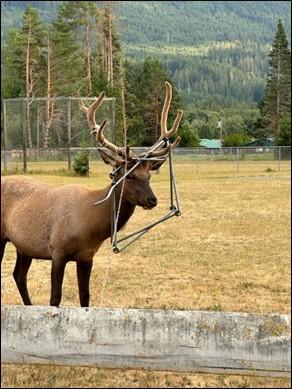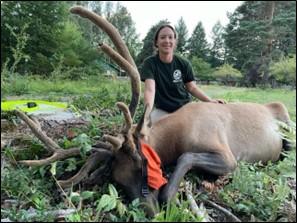Managing Wildlife Populations
Klickitat County Bat Count: Biologist Wickhem conducted a bat count in Klickitat County with the help of Volunteers Flick, Hadley, and Robinson. A resident had reported a maternity colony (where numerous female bats give birth and rear their pups until they can fly) in the attic of a building on the property they manage. Earlier in the summer, the bats had deposited a large amount of guano in the attic. The bat team set up in strategic locations around the building to attempt to count the bats as they exited. Unfortunately, they only recorded one bat leaving the building during the survey. However, the team noted numerous bats flying past the building from what seemed to be a different, nearby location. It’s possible that the pups are now able to fly on their own and the bats recently moved into another roost on the property. The team did collect several recordings on an echolocation acoustic recorder that will be analyzed to determine what species were flying past the building. Wickhem will work with the landowner to determine where the bats are roosting now, and to schedule a follow-up survey next year, but earlier in the summer.

Klickitat Mule Deer Mortality Investigation: Biologist Wickhem investigated two collared mule deer mortalities this week, the first with the help of Wildlife Conflict Specialist Jacobsen. The deer was completely intact (and very bloated) with minimal scavenging by raptors. The cause of death was not immediately clear, and it took a fair bit of investigating. A few superficial bite wounds were visible from the outset, but after shearing half of the carcass, the pair found dozens of bite wounds and scrapes all over the neck, tail, lower half of her torso, rear end and insides of the legs. While none of the bites broke the skin, collectively they appeared to have caused significant internal bleeding. Unfortunately, it was likely a slow and stressful death. Information on the situation was passed on to Washington Department of Fish and Wildlife (WDFW) enforcement. The second deer died just on the northeastern edge of the Newell Rodd fire in Eastern Klickitat County but appeared to have been killed by a cougar.
These deer are part of a four-year study being conducted throughout Game Management Units (GMU) 388 and 382 to track the annual movements of female mule deer and locate important migration corridors. Staff members are also attempting to determine cause of death when an animal dies, which has proven to be difficult. In winter 2021, 81 collars were deployed throughout GMUs for this effort. Twenty-two collars were deployed in the winter of 2022 and 23 in winter 2023. Most of the deployments for 2022 through 2023 were redeployments replacing study deer that died over the first two years of the study. We are nearing the end of the study so these collars will not be redeployed for this project.
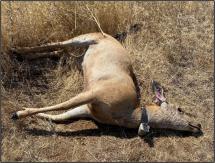
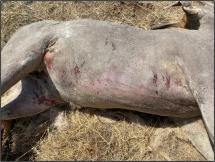
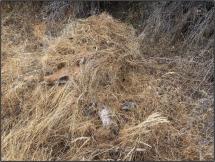
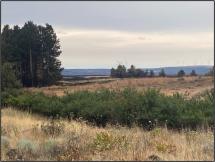
Bumble Bee Atlas Survey: Biologists Combs, Holman, and Stephens surveyed two one-hectare plots in a grid cell for the Pacific Northwest Bumble Bee Atlas. The grid cell was located on Department of Natural Resource (DNR) land in Cowlitz County. Biologists captured the bumble bees using nets and then placed the bees in a cooler to chill them which temporarily immobilizes them. While the bees are still, photos used for identification are taken from several angles. The bees are then released unharmed near the capture location. During the effort, the biologists caught a total of 25 bumble bees which included the yellowhead bumble bee, yellow-faced bumble bee, fuzzy horned bumble bee, and the yellow bumble bee. More information can be found at www.bumblebeewatch.org.
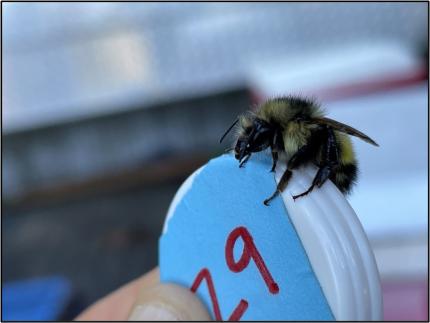
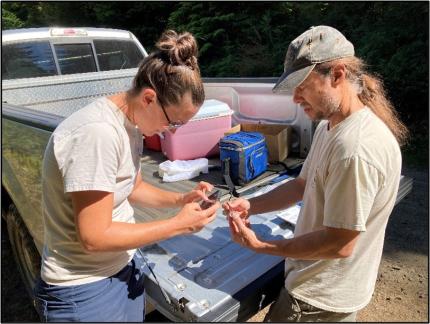
Goat Rocks Mountain Goat Survey: Biologists Stephens and Holman, along with Biologist Borrego from the Nisqually Tribe conducted an aerial survey for mountain goats in the Goat Rocks Wilderness Area. Twenty distinct groups of goats were observed during the four hour effort. A total of 134 goats were recorded and after the sightability model corrected for goats that may have been missed by observers due to being obstructed by vegetation or rocks, the total population estimate came to 141 with a kid to adult ratio of 28:100. This number is very similar to results from last year’s effort and marks the first year since 2015 that biologists have not observed a decline in this population.

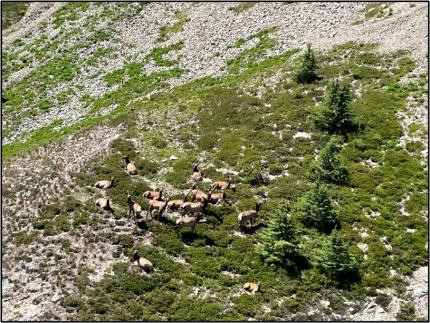
Providing Conflict Prevention and Education
Packwood Elk Immobilization: Biologists received reports of a bull elk with a chair on its head in Packwood. A few days after initial reports, the elk was photographed with a chair and a long piece of rope hanging from his antler. Biologists Stephens and Holman were able to locate the elk, immobilize him, and remove the chair and rope from his antler. It is suspected that members of the public attempted to remove the chair and that is how the rope became tied to his antler. Unbelievably, it was confirmed that this was the same animal who had gotten parts of a hammock entangled in his antlers last fall. Because of this, he was affectionately dubbed “Hammock Head” by the local community and gained some notoriety beyond Packwood and even beyond Washington State. After he shed his antlers this spring and the hammock parts remained, biologists immobilized him in May of this year to remove the hammock.
